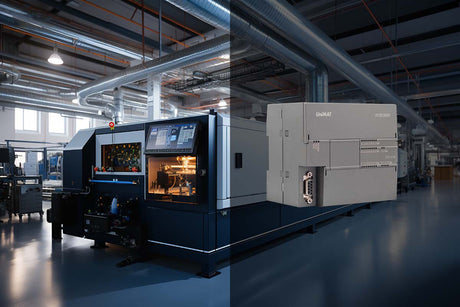In industrial automation control systems,PLC modules are the fundamental building blocks of their core architecture.For engineers,system integrators,or automation students,understanding"What are the types of PLC modules?"is the first step in system design,selection,and maintenance.This article systematically introduces various types of PLC modules to help you build a clear knowledge framework.

What are PLC Modules?
PLC stands for Programmable Logic Controller,and PLC modules represent its modular design.Unlike compact PLCs,modular PLCs allow users to combine different functional modules based on actual needs,much like building blocks,to construct a powerful,flexible,and scalable control system.This design significantly enhances the system's applicability and maintenance efficiency.
Detailed Overview of Main Types of PLC Modules
Categorized by function,the mainstream PLC modules mainly include the following types:
1.Central Processing Unit(CPU)Module
This is the brain of the entire PLC system and the core PLC module.
- Function:Responsible for executing user-written control programs,processing data,performing logical operations,and coordinating the work of all other modules in the system.
- Characteristics:Its performance determines the PLC's processing speed,program capacity,and connectivity.Key selection factors include scan time,memory size,and supported languages(e.g.,Ladder Logic,Structured Text).
2.Digital I/O Modules
These are the most common and basic input/output PLC modules,divided into two types:
- Digital Input Module:
- Function:Receives switch signals from the field(e.g.,push buttons,limit switches,sensor signals).These signals are typically"on"or"off"states.
- Application:Detecting equipment status,such as whether a motor is overloaded or a valve is in position.
- Digital Output Module:
- Function:Sends switch commands to actuating devices based on the results of the program's logical operations.
- Application:Controlling the start/stop of contactors,relays,indicator lights,solenoid valves,etc.
3.Analog I/O Modules
Used to handle continuously changing physical quantities,these are key PLC modules for precise control.
- Analog Input Module:
- Function:Receives continuous signals from analog sensors(e.g.,temperature transmitters,pressure sensors,flow meters),typically 4-20mA current or 0-10V voltage.
- Application:Real-time monitoring of process variables like temperature,pressure,flow,and level.
- Analog Output Module:
- Function:Outputs continuously varying analog signals to control field devices.
- Application:Adjusting the speed of frequency converters,controlling the opening of proportional valves,setting the position of electric actuators,etc.
4.Special Function Modules
These are high-performance PLC modules designed to meet complex control requirements.
- Function:Handle tasks that the CPU and conventional I/O modules cannot perform directly.
- Common Types:
- High-Speed Counter Module:Used for accurately acquiring high-speed pulse signals from devices like encoders or glass scales.
- Positioning Control Module:Used for precise control of stepper or servo motors to achieve complex motion control.
- PID Control Module:Specifically designed to execute PID algorithms for closed-loop,precise regulation of process variables like temperature and pressure.
- Communication Module:Expands the system's communication interfaces,such as Profibus-DP,Profinet,EtherCAT,Ethernet,etc.,for connecting other PLCs,HMIs,or upper-level management systems.
5.Power Supply Module
Provides stable and reliable power for the entire PLC system.It is the fundamental PLC module that ensures stable system operation.
- Function:Converts the external power supply(e.g.,220V AC or 24V DC)to the operating levels required by the internal modules.
6.Backplane/Rack Module
Although not a functional module,it is the physical carrier for all PLC modules.
- Function:Provides slots for the modules and facilitates electrical connections and data communication between them.
How to Choose the Right PLC Modules?
When selecting PLC modules,the following points should be considered comprehensively:
- I/O Point Count:Count the number of required digital and analog input/output points,reserving a 10%-20%margin.
- Control Requirements:Determine if special functions like high-speed counting,precise positioning,or PID regulation are needed.
- Communication Requirements:Identify which devices need to communicate and select communication modules supporting the relevant protocols.
- Environmental Suitability:Consider the operating environment's temperature,humidity,vibration,and electromagnetic interference,opting for industrial-grade products.
- Brand and System Compatibility:Ensure the selected modules are compatible with the CPU and programming software.

Summary
In conclusion,PLC modules come in a wide variety of types.From the computational Central Processing Unit Module,to the field-sensing and controlling Digital and Analog I/O Modules,and the advanced Special Function Modules,they collectively form a complete and efficient automation control system.Understanding"what are the types of PLC modules"and their respective functions is the cornerstone of successfully designing and applying PLC systems.Through rational selection and combination of PLC modules,automated solutions can be constructed to meet the demands of any complex industrial scenario.

